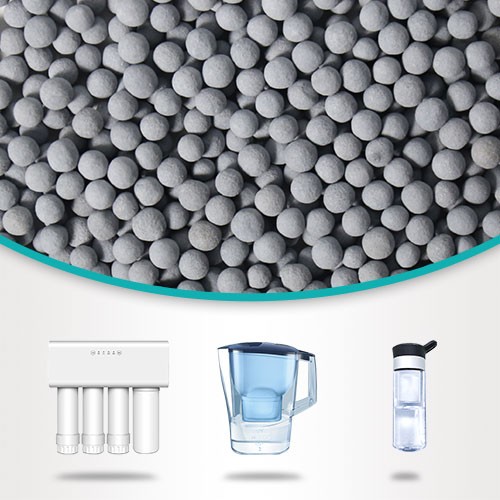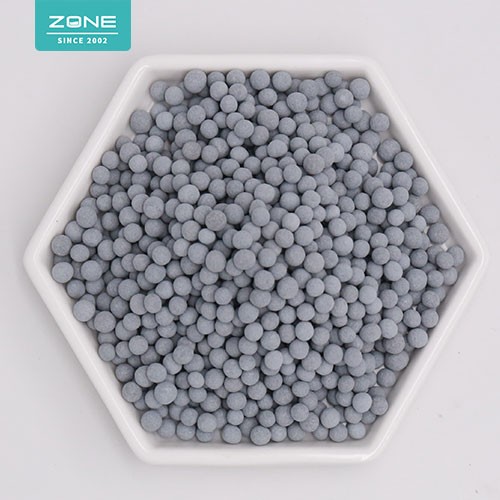Hydrogen-rich Water: Myth or Science? Uncover the Long-Life Secret Behind ZONE’s ORP Hydrogen Balls
“Can you really fight oxidation just by drinking water?”
“A filter medium that lasts three years without replacement?”
Recently, overseas customers have been writing to ask what makes the “ORP Hydrogen Ball” on our website so special. In this post, we’ll explain—once and for all—what hydrogen water is, how our hydrogen balls differ from ordinary filter media, and why ZONE can promise an exceptionally long service life. After five minutes, you’ll understand why a truly good glass of water is never an accident.
---
1. From “Clean Water” to “Healthy Water”: The Rise of Hydrogen Water
Home water purification has evolved in three waves over the past 30 years:
1. Wave 1 – “Visible” filtration: PP + GAC removed dirt and chlorine; water looked clean.
2. Wave 2 – “Invisible” filtration: RO/UF eliminated heavy metals and viruses; water became pure.
3. Wave 3 – “Functional” filtration: On top of safety, consumers now demand health benefits—hydrogen-rich, alkaline, and negative-ORP water.
Hydrogen-rich water (HRW) is the flagship of Wave 3.
In 2007, Professor Shigeo Ohta of Nippon Medical School published the first paper in Nature Medicine proving that dissolved H₂ ≥ 0.5 mg/L can selectively neutralize the most cytotoxic free radicals (•OH and ONOO⁻). Since then, more than 1,200 SCI papers have linked HRW to antioxidant, anti-inflammatory, and metabolic effects. Market numbers are even clearer: global yearly sales of hydrogen water devices reached 4.8 million units in 2022, with a CAGR of 23 %, 60 % of which came from Chinese and Korean manufacturers.
The technical challenge, however, is “duration.”
Hydrogen has low solubility (1.6 mg/L at 25 °C) and escapes within 30 minutes. Electrolysis machines need power, PC boards, and after-sales service. Plain magnesium rods are consumed quickly and cake up in 2–3 months. Sintered “hydrogen ceramic balls” offer a better route: composite powders of Mg, Si, Ti, and tourmaline are fired into porous spheres that release H₂ slowly and steadily. ZONE’s ORP Hydrogen Ball is the third-generation upgrade of this concept.
---
2. Three Reasons Why ZONE Hydrogen Balls Last Longer
A. Formula – Turning a “Consumable” into a “Slow-Release” Medium
Old-style balls contain only elemental Mg plus clay; reaction is violent and life drops 50 % after 100–150 L. ZONE uses a Mg–Si–Ti ternary gradient system:
- Mg powder: source of reductive hydrogen
- Wollastonite: forms a porous skeleton, lowers instantaneous reaction rate
- Ti-doped tourmaline: releases negative ions, synergistically cuts ORP


Lab data (30 °C, pH 7.2 tap): H₂ 0.8–1.2 mg/L for 2,600 L—15× longer than plain Mg rods.
B. Sintering – Crystal Lock at 1,200 °C
Low-temperature (<900 °C) balls only “wrap” Mg physically; they swell and powderize. ZONE keeps spheres at 1,200 °C for 4 h in a tunnel kiln, allowing a silicate glass phase to anchor Mg in the lattice. Hardness reaches 6 Mohs, dust loss <0.1 %, TDS rise ≤5 ppm—hydrogen without sludge.

C. Size – The Sweet Spot of Ø3–5 mm
Too large (Ø8 mm) = low surface area, slow start.
Too small (Ø1 mm) = clogging risk.
ZONE’s 3–5 mm balls give 42 % voidage and 18–22 s hydraulic residence—just enough for H₂ to dissolve before water exits. Average ORP –280 mV (feed +220 mV), pH 8.3–8.7, meeting Japan’s functional-water standard.

---
3. Four Typical Installations
1. Point-of-use faucet: 100 g (0.3 L bed), 3 L/min flow, 0.6–1.0 mg H₂/L, 6 months maintenance-free.
2. Table-top pitcher: 150 g + PP/GAC pre-filter, 1.8 L, 8 min stand, 1.2 mg H₂/L.
3. Commercial cooler: 2 kg in 20” big-blue, 10 L/min continuous, 200 L/day, 12 months life.
4. Functional shower: 200 g hydrogen balls + Ca-sulfite dechlorination, bath-water ORP –200 mV, less scalp irritation.

---
4. Four Customer FAQs—Answered
Q1. Will pH exceed 10?
A: A phosphate-zirconium buffer keeps pH at 8.5–8.7. Within China’s GB 5749-2022 limit (6.5–8.5) on the high edge but safe for lifelong drinking.
Q2. Magnesium overdose?
A: Only 2–4 mg Mg²⁺ released per litre—far below WHO’s 350 mg daily ceiling and the 150 mg/L national standard.
Q3. Clogging or bacteria after long use?
A: <0.5 % water absorption after vitrification; negative-ORP environment (–250 mV) suppresses aerobic microbes. Back-wash 30 s every 6 months to restore flow.
Q4. How to verify H₂ concentration?
A: Every batch is checked with TRUSTLEX ENH-1000 (Japan); COA supplied. Quick “blue-drop” reagent also works: ≥0.6 mg/L turns blue.
---
5. System Thinking: Hydrogen Ball ≠ Panacea
Hydrogen balls add “function” on top of “safety.”
If feed TDS >1,000 ppm or heavy metals present, RO is still mandatory. If chlorine >2 ppm, add GAC ahead. If micro-risk is high, use UV or UF. ZONE’s recommended chain:
PP → CTO → RO/UF → Alkaline carbon → Hydrogen ball → Post bacteriostatic carbon
(Safety) (Taste) (Function) (Fresh)
Let each medium do its job; the hydrogen ball will last longest in truly clean water.
---
6. A Good Glass of Water Starts with the “Core”
Since 2013, ZONE has done one thing only—make mineral filter media that outperform.
Today we run 12 automatic tunnel kilns, a CNAS-certified lab, and own 30 national patents. Our media have reached 63 countries, with cumulative sales of 8,600 tons. The ORP Hydrogen Ball is our latest answer to functional water: it cures nothing, yet adds antioxidant power to every sip; it is no perpetual-motion machine, yet releases H₂ for 2,600 L—15× farther than plain magnesium.
If you need a long-life, safe, hassle-free hydrogen medium, visit [onlyzonewater.com], download the full tech white paper, or leave an inquiry on the [ORP Hydrogen Ball page]. We offer 500 g trial packs, OEM sizes, and on-site technical support. Let the world drink better water—one hydrogen ball at a time.
RELATED NEWS
CATEGORIES
LATEST NEWS
CONTACT US
Name: Joy
Mobile:WhatsApp +86-15615531918
Tel:+86-533-6723045
Whatsapp:+86 15615531918
Email:joy@onlyzone.cn
Add:Building 25-1, 333 Sanying Road, Zibo City, Shandong Province, China